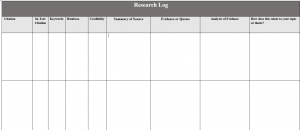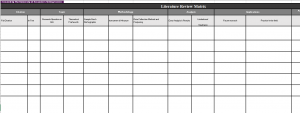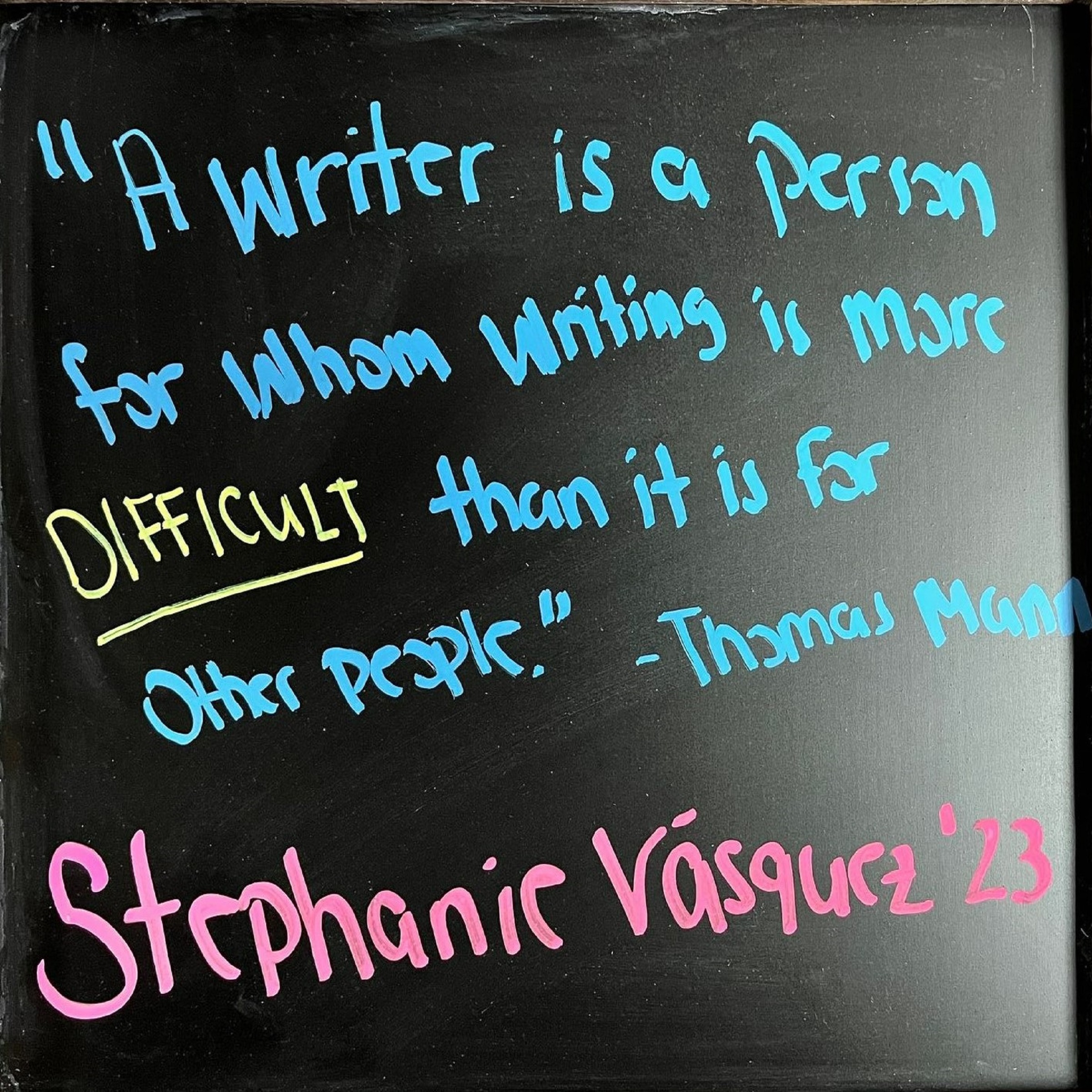A research log is a tool to help you organize, analyze, and evaluate sources as you begin to gather information about a topic. It typically consists of a table with labels across the top that serve as a set of instructions when approaching a new source. Filling out each column helps you gather the information you need for your project. For example, you’ll need to include the full-citation in your research log, which will allow to to copy and paste the full citation into your completed draft later. You also need to include what makes the source credible, so you’ll remember to check if it’s peer-reviewed or scholarly. That information will become important later as you determine which of your sources should be included in your draft based off their relevance and credibility. Perhaps you’ll have some sources in the log that support your argument, but they come from low quality sources. Comparing the credibility will help you make those choices. Most importantly, a research log lets you place all of your evidence in one spot so can easily compare data from each source. The table will ensure that you don’t confuse your sources or accidentally plagiarize by crediting a fact to a different source. Finally, there’s a space for you to analyze the evidence in the log and link it to your main argument.
There’s two major reasons for using a research log :
1.) It will keep you organized. Rather than jotting notes in a notebook, filling in the required information for each column in a research log will ensure you’ve collected the needed information before moving on to the next source. You won’t have to keep returning to previous sources or struggle to remember how you found a source because your search terms and databases are in the log. You’ll also never lose a source or forget where a quote came from.
2) It will help you compare your evidence. Having the evidence from all of the sources in one place lets you look at the data side-by-side to evaluate which items would be best to include in your paper. Looking at all of the evidence in a research log can also help you refine your thesis before you begin drafting.
If you have to write a paper that requires research, this tool can save you a significant amount of time, and it could eliminate stress later on in your writing process.
Here’s a template for a Research Log













